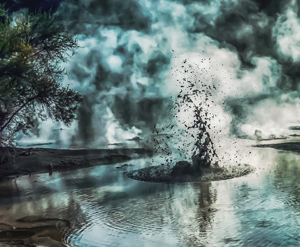Wonders of Mother Nature … steaming outburst of geysers … bubbling mud pools … out-worldly landscapes … all within a stone’s throw from Australia.
Yes ! You guessed it. Beautiful New Zealand !
Where is it
Pacific Rim of Fire … North Island, New Zealand … 5 minutes from Rotorua city central … mud pools; hot springs … legendary Pohutu Geyser in Te Puia … geysers erupts to height of 30 metres (100 feet) up to 20 times a day …
It has once erupted non-stop for more than 250 days ! Amazing !!!
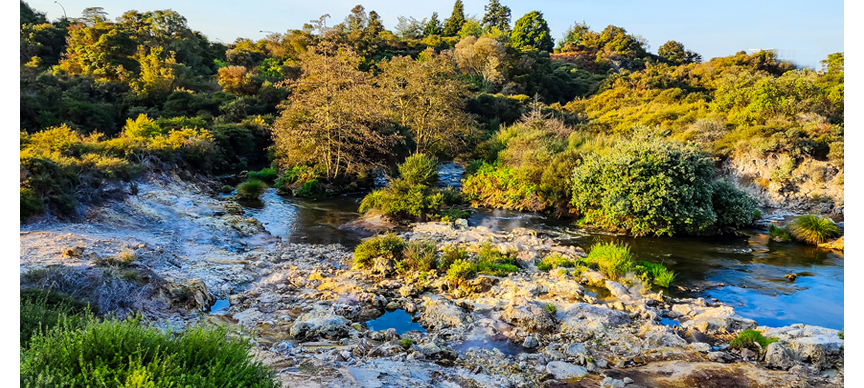
Rotorua, volcanic wonderland … unusual landscapes, amazing geothermal activities … unique features … rare flora, fauna … complimented by rich Māori history, folklore, preserved under New Zealand Māori Arts and Crafts Institute – also training next generation local artists.
Te Whakarewarewa Thermal Valley
Located within Te Whakarewarewa Thermal Valley, you can visit day and evening – guided by well-informed dedicated hosts to see one of world’s most unusual sights – geysers, mud pools, hot springs set in almost lunar-like landscapes.
Pohutu Geyser is Southern Hemisphere’s largest natural geyser … erupting skyward over 15 times a day.
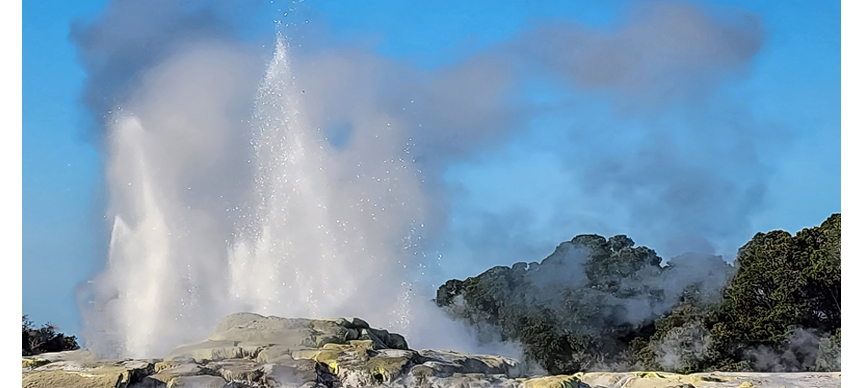
Geysers
Watch white clouds of steam shooting up at lightning speed … dissipating downwards … then up again at lightning speed … dissipating downward yet again …
You just cannot take your eyes away !
Geysers form when hot water well up from underground reservoir, passing through narrow vent to surface. Vent acts like safety valve of pressure cooker – highly pressurised, superheated above boiling point, steam rise through constricted vent to surface. Result – hot, frothy steam-water is sprayed out of vent; cycle repeats itself over and over again.
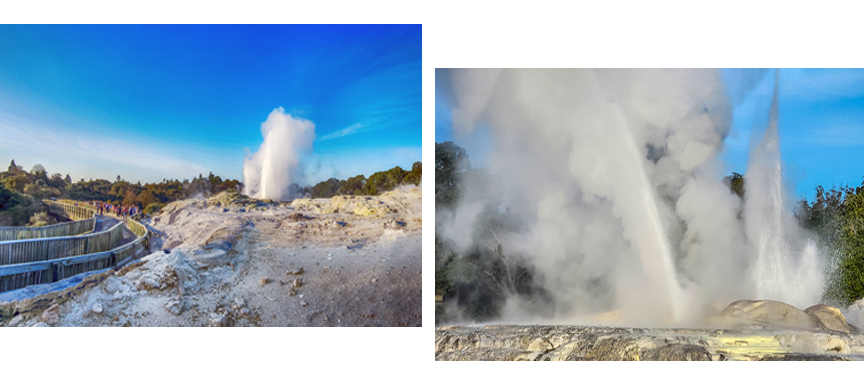
There were about 220 geysers recorded in 19th century; unfortunately, by 2004 only 58 geysers survived, some very small.
Geysers are rare and precious – only about 1000 active geysers around world – half in Yellowstone National Park, Wyoming, USA; others scattered in Chile, Iceland, Russia’s Kamchatka peninsula, Alaska, New Zealand.
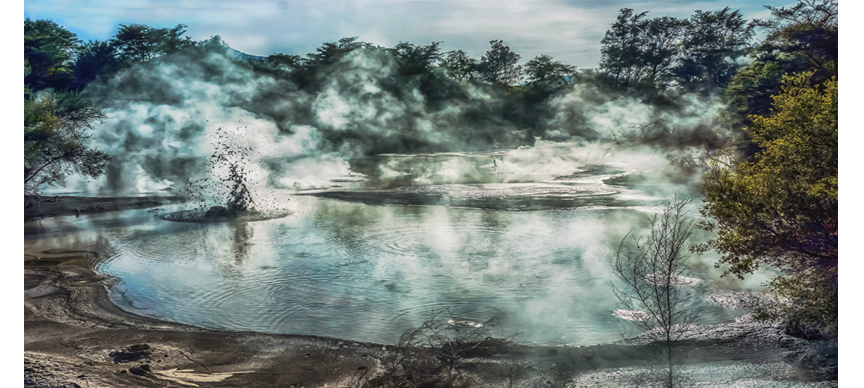
Mud pools
Together with geysers are mud pools … bubbling, spitting hot mud; stark, grey landscape surrounds.
Mud pools are created when steam, gases rise underneath rainwater ponds. Gases react with surrounding heated rocks producing clay, making muddy, steam-heated slurry – hence mud pools.
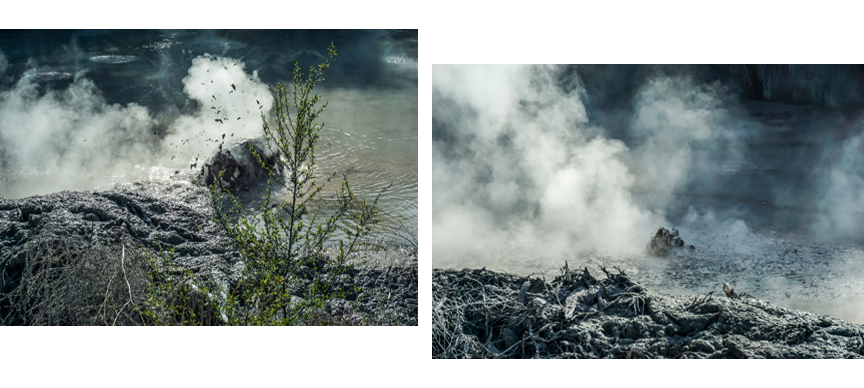
Mud pools bubble like thick porridge; scattered around Rotorua, Taupo volcanic zone – together with shooting geysers, form cascading mineral-rich colourful rock terraces – unique landscape to behold.
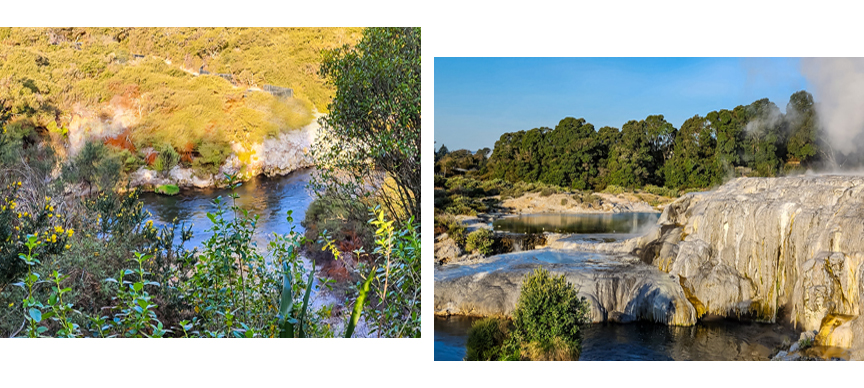
Volcanic hot springs
Clear water in boiling springs rise from fissures, fault-lines, where rock surface is broken, providing pathway for hot water; forming hot springs. Some are too hot for bathing; historically used for cooking purposes.
Other hot springs in older, extinct volcanic regions like Hauraki Plains, Bay of Plenty, where heat sources are diffused, less intense, but still saturated with minerals, offer therapeutic properties for various ailments.
Warm springs (below 70°C or 158°F) found in non-volcanic areas of New Zealand Faults (deep rock fractures) provide channels of warm water – hot springs at Hamner Springs along Hope Fault, Alpine Fault, Southern Alps.
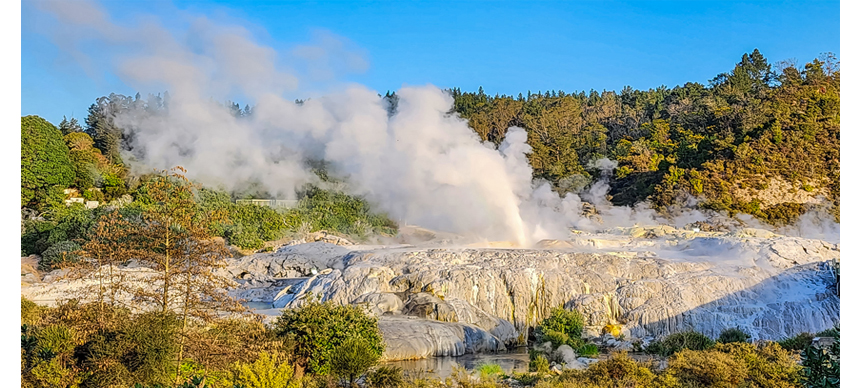
Hot springs related features
Hot springs are mixture of minerals and water – weak alkaline mixture with ‘soapy-feel’ or alkaline chloride water … due to contact with subterranean rocks.
Rain water contains minute traces of radioactive isotope of hydrogen, tritium produced when cosmic rays bombard water molecules.
Sinter deposits, composed of silica, silica minerals (quartz), silicate minerals dissolved when hot water passes through fractured rocks. Cooling geothermal water deposit some of dissolved silica onto nearest surface – forming white silica with traces of impurities or micro-organisms producing colourful landscapes – pinks from iron oxide, grey to black from iron sulphide (pyrite).
Some deposits shape into small cones, miniature volcanoes, ‘geyser eggs’ rounded masses close to geyser vents or terraces (Pink and White Terraces at Lake Rotomahana).
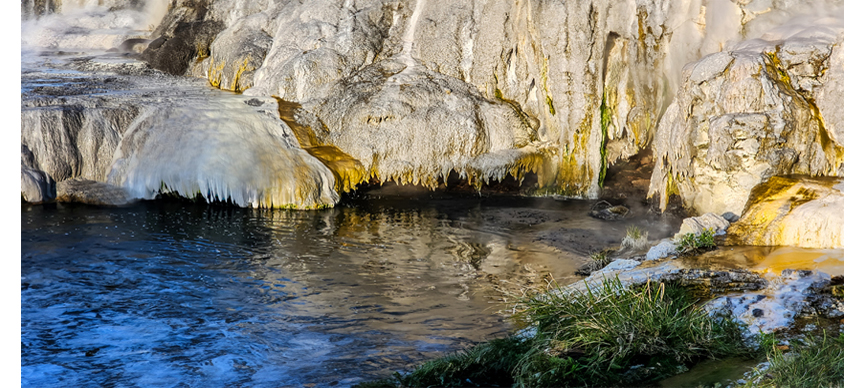
Conclusion
Geothermal features are easily damaged. Sensitive to changes in underground water supply, affected by natural events like earthquakes, landslides; impact of humans on environment has also impacted natural change. Water levels are affected – dropping significantly in Rotorua with obvious deterioration in geyser activity at Whakarewarewa.
This Earth is fragile … nurture her wonders, like geysers, mud pools and hot springs so others may appreciate them for generations to come …
